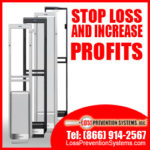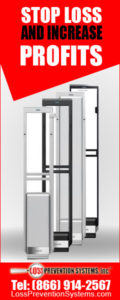
When new legislation passes in many states, the array of issues that come to new elected officials varies considerably.
Shoplifting laws are one of the many topics legislators review to make sure the punishment is appropriate. Businesses and small businesses in general need to be protected by the laws of the country to ensure the economic growth of a locality, the state and ultimately the country.
The punishment for shoplifting varies according to the state and in some instances the county where the business is located. Laws are put in place to make sure these silent crimes are not committed with impunity, and the shoplifter is prosecuted according to the law.
Unfortunately, many of these shoplifting incidents are not prosecuted for many different reasons. Ultimately, it is up to the business to decide whether to prosecute the shoplifter or not. As a business owner, they have to consider the costs associated with prosecuting shoplifters as a rule and whether it is economically sound to do so.
A lawyer’s fee for an hour or to prosecute a case depends on the region, the experience and the complexity of a case but, either way, their fee does not come cheap.
As a business owner, is it practical or economically possible for you to have a privately retained attorney? Is it your business practice to prosecute a shoplifter regardless of the quantity they steal? There are many questions one needs to answer, and many options you have to make as a business owner regarding shoplifting.
Shoplifting in the United States have become a multi billion nightmare for businesses in the retail industry. From the casual shoplifter to organized retail rings, the losses the retail industry suffers are staggering. The small stores or shops in this industry have to fight and stop loses because their livelihood depends on their ability to stop the shoplifters. The profit margin from sales is too small for them to ignore the problem or to neglected it for too long.
For many of the small retail businesses, a loss prevention system that allows them to protect their merchandise and profits is one of the best ways to invest in their business. Big retail chains have for many years now invested in loss prevention systems to help them minimize the losses and help them prevent shoplifting and employee theft.
A loss prevention system that gives the employer or management of the store up to the minute information about the merchandise , allows them to do their job more efficiently and helps them prevent theft is an investment that will pay off sooner than you think.
 Have you ever found yourself in a situation where you have to make a decision on a purchase and you have to determine what is going to be best for your situation? I know that car shopping is one of those purchases where I have to take multiple factors into consideration and it isn’t always just about cost. I have to be able to accommodate at least 5 adults and perhaps even 6 if my mother-in-law is included in a ride. I need to get decent gas mileage because I never know who may have to use it and all of our work so I don’t want to fill it every day. I need dependability, I’ve had too many vehicle break-downs and I don’t want a breakdown on my wife if I can help it. Before I make a purchase I search customer reviews of vehicles and automotive expert ratings on websites such as Edmunds or Kelly Blue Book. The vehicle has to meet my requirements or I have to pass on it regardless of how good the deal may appear to be. The same thing can be true for a retailer when determining the best Electronic Article Surveillance (EAS) System and tags to use to combat theft related shortage.
Have you ever found yourself in a situation where you have to make a decision on a purchase and you have to determine what is going to be best for your situation? I know that car shopping is one of those purchases where I have to take multiple factors into consideration and it isn’t always just about cost. I have to be able to accommodate at least 5 adults and perhaps even 6 if my mother-in-law is included in a ride. I need to get decent gas mileage because I never know who may have to use it and all of our work so I don’t want to fill it every day. I need dependability, I’ve had too many vehicle break-downs and I don’t want a breakdown on my wife if I can help it. Before I make a purchase I search customer reviews of vehicles and automotive expert ratings on websites such as Edmunds or Kelly Blue Book. The vehicle has to meet my requirements or I have to pass on it regardless of how good the deal may appear to be. The same thing can be true for a retailer when determining the best Electronic Article Surveillance (EAS) System and tags to use to combat theft related shortage.